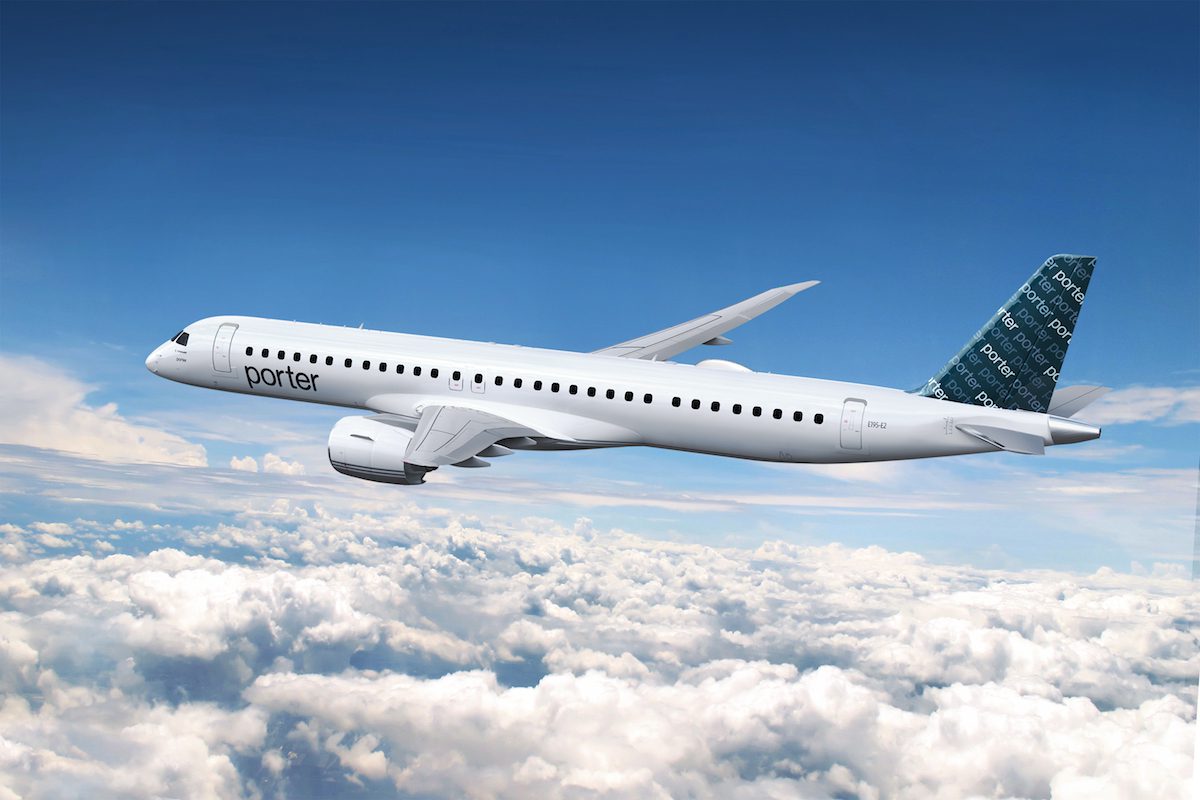
Porter Airlines is equipping its Embraer E195-E2 fleet with Viasat in-flight connectivity.
Porter Airlines will feature in-flight internet service for the first time on a fleet of new Embraer E195-E2 aircraft, according to a Nov. 18 announcement from the Toronto-based regional carrier.
The new aircraft will be line-fit with Viasat’s in-flight connectivity (IFC) system and are expected to enter service in the second half of 2022. Porter is the North American launch carrier for Embraer’s E2 second generation version of its E195 regional jet that will be operated from Ottawa, Montreal, Halifax and Toronto Pearson International Airport.
“Introducing the E2 into Porter’s fleet gives us the ability to serve customers across North America,” Kevin Jackson, executive vice president and chief commercial officer for Porter said in a statement. “Using Viasat’s technology allows us to create a distinct digital passenger experience for longer routes that builds on our award-winning approach to hospitality.”

A screenshot from the Porter Airlines In-flight Experience FAQ page, showing it’s current answer on passenger access to in-flight Wi-Fi. (Porter Airlines)
Porter currently features no access to in-flight internet services on its fleet of De Havilland Dash-8-400s. The Viasat IFC announcement for Porter comes following the completion of a sale and leaseback deal on 19 of plans announced in July to introduce 80 new E2 aircraft into its fleet.
The Canadian airline re-started passenger carrying service on Sept. 8, after suspending flights for nearly 18 months under COVID-19 travel restrictions. On Oct. 6, Porter marked a return to all 18 of its year-round destinations.
“From our initial conversations with the Porter Airlines team, it was clear they place a high-value and emphasis on delivering an enhanced experience,” Don Buchman, Vice President and general manager of commercial aviation for Viasat said in a statement. “Our proven IFC system delivers on this promise, which enables their passengers to benefit from the speeds, capacity and coverage offered by our ViaSat-2 satellite today, as well as our next-generation satellite constellation, ViaSat-3, in the future.”